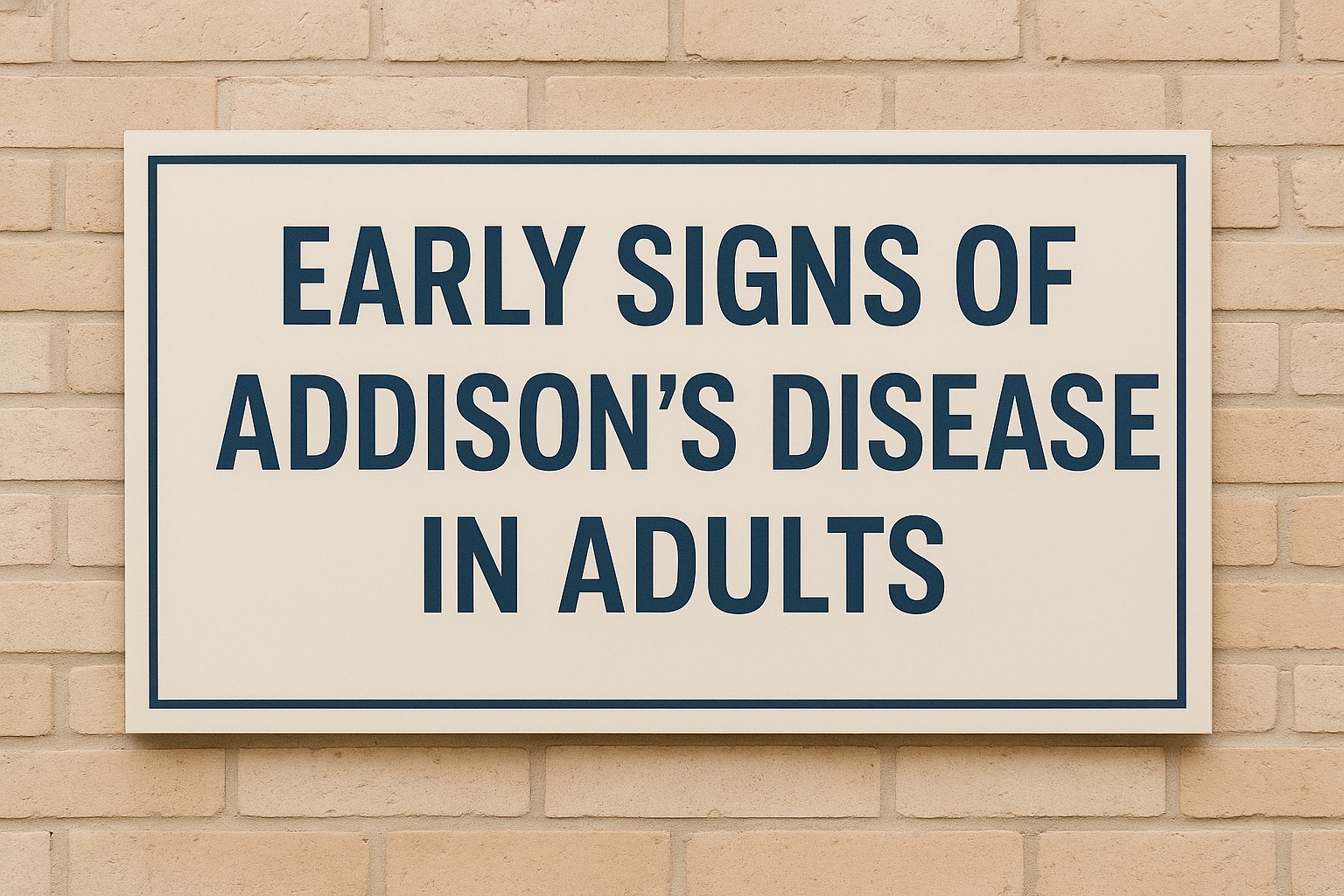
Early Signs of Addison’s Disease in Adults: Symptoms You Shouldn’t Ignore
- Share
- Share
- Share
- Share
Addison’s disease, also known as primary adrenal insufficiency, is a rare but serious condition that can be life-threatening if left untreated. It occurs when the adrenal glands, located just above the kidneys, fail to produce enough cortisol and sometimes aldosterone. Recognizing the early signs of Addison’s disease in adults is crucial for timely intervention and effective management.
Table of Contents
- What Is Addison’s Disease?
- Why Early Detection Is Crucial
- Common Early Signs of Addison’s Disease in Adults
- Less Common but Concerning Symptoms
- Risk Factors for Addison’s Disease
- Diagnostic Process
- Treatment and Management
- Lifestyle Adjustments for Addison’s Patients
- When to Seek Immediate Medical Attention
- FAQs
- Conclusion
What Is Addison’s Disease?
Addison’s disease is a chronic condition where the adrenal glands produce insufficient amounts of crucial hormones. Cortisol helps regulate metabolism, blood pressure, and the body’s response to stress, while aldosterone maintains salt and water balance. Without these hormones, the body cannot function properly.
Why Early Detection Is Crucial
If Addison’s disease is diagnosed early, patients can manage symptoms effectively and prevent an adrenal crisis, a potentially life-threatening event. Early detection improves quality of life and helps avoid complications related to long-term hormone deficiencies.
Common Early Signs of Addison’s Disease in Adults
The symptoms often develop gradually and may be mistaken for other health issues, but common early signs include:
- Chronic fatigue and weakness
- Unexplained weight loss
- Loss of appetite
- Low blood pressure (hypotension)
- Darkening of the skin (hyperpigmentation), particularly in scars, skin folds, and gums
- Salt cravings
- Dizziness or fainting spells
These symptoms worsen over time if left untreated.
Less Common but Concerning Symptoms
Some adults may experience less typical signs such as:
- Nausea, vomiting, and diarrhea
- Muscle or joint pains
- Irritability and depression
- Low blood sugar (hypoglycemia)
- Body hair loss or sexual dysfunction
These symptoms can complicate diagnosis but should not be ignored.
[Internal Link Placeholder]
Risk Factors for Addison’s Disease
Several conditions and factors can increase the risk of developing Addison’s disease:
- Autoimmune diseases (e.g., type 1 diabetes, thyroiditis)
- Chronic infections (e.g., tuberculosis)
- Genetic predispositions
- Cancer or metastasis to adrenal glands
- Previous adrenal surgery or damage
External Source: Mayo Clinic — Addison’s Disease Overview
Diagnostic Process
Diagnosis typically involves:
- Blood tests to measure cortisol, sodium, potassium, and ACTH levels.
- ACTH stimulation test to assess adrenal response.
- Imaging tests such as CT or MRI scans to evaluate adrenal glands.
Early and accurate diagnosis is essential for managing the condition.
Treatment and Management
The standard treatment for Addison’s disease involves lifelong hormone replacement therapy:
- Hydrocortisone, prednisone, or cortisone acetate for cortisol replacement.
- Fludrocortisone acetate for aldosterone replacement if needed.
Patients may also need increased dosages during stress or illness to prevent adrenal crisis.
Lifestyle Adjustments for Addison’s Patients
Managing Addison’s disease extends beyond medication. Patients should:
- Maintain a balanced diet rich in sodium and potassium.
- Carry an emergency medical ID.
- Keep an emergency injection kit (hydrocortisone) for adrenal crises.
- Schedule regular endocrinologist visits.
- Learn to adjust medication during illness, injury, or stress.
When to Seek Immediate Medical Attention
Signs of an adrenal crisis requiring emergency care include:
- Severe weakness
- Severe abdominal pain
- Low blood pressure leading to shock
- Confusion or loss of consciousness
- Uncontrollable vomiting and diarrhea
Immediate medical intervention can be life-saving.
FAQs
1. Can adults develop Addison’s disease later in life? Yes, Addison’s disease can develop at any age, including later adulthood.
2. Is Addison’s disease curable? No, but it is manageable with proper hormone replacement therapy.
3. What are the most telling early signs of Addison’s disease? Chronic fatigue, unexplained weight loss, and skin hyperpigmentation are key early signs.
4. How often should hormone levels be monitored? Patients typically require monitoring every 3–6 months or as advised by their endocrinologist.
5. Can Addison’s disease be fatal if untreated? Yes, untreated Addison’s disease can lead to an adrenal crisis, which can be fatal.
6. Are stress and Addison’s disease connected? Yes, stress increases the body’s need for cortisol, making stress management crucial for Addison’s patients.
Conclusion
Early recognition of Addison’s disease in adults can make the difference between manageable symptoms and life-threatening complications. Understanding the early warning signs enables timely diagnosis and effective treatment. If you or someone you know exhibits these symptoms, it’s essential to consult a healthcare provider immediately.
Stay updated on health insights by subscribing to the [YourSiteName Newsletter] for more expert guides and tips.
